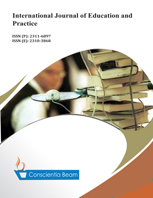Emotional Regulation and Social Support as Conditions for Aggressor and Victim Experience in Early and Late Adolescence - Developmental Psychopathology Lenses
DOI:
https://doi.org/10.18488/61.v10i4.3198Abstract
The aim of this research was to examine the hypothetical model of conditionings of adolescents to positive adaptation and to identify risk and protective factors for being victims or aggressors in interpersonal relation. In the research exploratory model adopted for the study, the following variables were considered: temperament; attachment; aggressiveness; social support; resilience; and previous victim or aggressor experiences. The study group comprised 779 adolescents (399 in early; 380 in late adolescence). Path analysis was used to examine the interrelationships and to identify the direct and indirect pathways. In early adolescence, main triggers for victim experiences were low resilience and aggressiveness, in girls, and aggressiveness and past victim experience in boys. For aggressor experiences there were low resilience and high sadness among girls, and sadness and aggressiveness, among boys. In late adolescence, the main triggers of victim experiences were previous victim experience and sadness (inhibited by classmate support and resilience) and for aggressor experiences, there were hostility, sadness and previous aggressor experience. The main conclusion that can be drawn from this study is that the potential preventive and therapeutic interventions require consideration of factors such as age, level of educational success, aggressiveness and social support.





